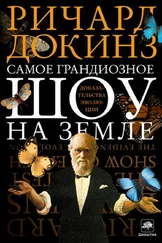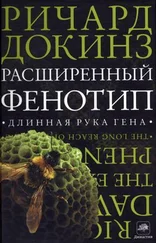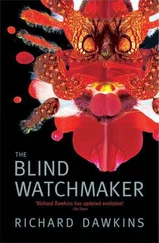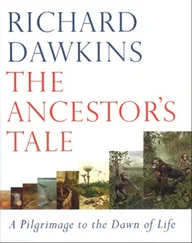[130] HARDY, A. (1965) The Living Stream. Collins. London.
[131] HARDY, A. C. (1954) The escape from specialization. In Evolution as a Process (Huxley. J., Hardy, A. C, & Ford. E. B., eds.). Allen and Unwin, London, 1st edn.
[132] HARVEY, P. H. & PAGEL, M.D. (1991) The Comparative Method inEvolutionary Biology. Oxford University Press. Oxford.
[133] HECKMAN. D. S., GEISER, D. M., EIDELL, B. R., et al. (2001) Molecular evidence for the early colonization of land by fungi and plants. Science 293: 1129-1133.
[134] HEESY, C. P. SI ROSS, CF. (2001) Evolution of activity patterns and chromatic vision in primates: Morphometrics, genetics and cladistics. Journal of Human Evolution 40:111-149.
[135] HOME, E. (1802) A description of the anatomy of the CbTiithorhynchus paradoxus. Philosophical Transactions of the Royal Society of London 92: 67-84.
[136] Hou, X.-G., ALDRIDGE, R. J., BERGSTROM, J., et al. (2004) The Cambrian Fossils of Chengjiang, China: The flowering of Early Animal Life. Blackwell Science, Oxford.
[137] HUCHON. D., MADSEN, O., SIBBALD. M.J.J.B., et al. (2002) Rodent phytogeny and a timescale for the evolution of Glires: Evidence from an extensive taxon sampling using three nuclear genes. Molecular Biology and Evolution 19:1053-1065.
[138] HUME, D. (1957/1757) The Natural History of Religion (Root. H. E., ed.). Stanford University Press, Stanford.
[139] HUXLEY. A. (1939) After Many a Summer. Chatto and Windus. London.
[140] HUXLEY, T. H. (2001/1836) Man's Place in Nature. Random House USA. New York. {512}
[141] INOUE, J. G., MASAKI. M., TSUKAMOTO, K., & NISHIDA. M. (2003) Basal actinopterygian relationships: A mitogenomic perspective on the phylogeny of the ‘ancient fish’. Molecular Phylogenetirs and Evolution 26:110-120.
[142] JEFFERY, W. R. & MARTASIAN, D. P. (1998) Evolution of eye regression in the caveflsh Astyanax: Apoptosis and the Pax-6 gene. American Zoology 38: 685-696.
[143] JERISON, H. J. (1973) Evolution of the Brain and Intelligence. Academic Press, New York.
[144] Ji, Q., Luo, Z.-X., YUAN, C.-X., et al. (2002) The earliest known eutherian mammal. Nature 416: 816-822.
[145] JOHANSON.D.C. & EDEY. M. A. (1981) Lucy: The Beginnings of Humankind. Grenada, London.
[146] JONES, S. (1993) The Language of the Genes: Biology, History, and the Evolutionary Future. Harper-Collins, London.
[147] JUDSON, O. (2002) Dr. Tatiana's Sex Advice to ail Creation. Metropolitan Books, New York,.
[148] KAUFFMAN, S.A. (1985) Self-organization, selective adaptation, and its limits. In Evolution at a Crossroads (Depew, D.J. & Weber. B. H., eds.). pp. 169-207. MIT Press, Cambridge. Mass.
[149] KEELING, P.J., & FAST, N.M. (2002) Microsporidia: Biology and evolution of highly reduced intracellular parasites. Annual Review of Miaobiology 56: 93-116.
[150] KEMP, T. S. (1982) Mammal lilce reptiles and the origin of mammals. Academic Press, London.
[151] KEMP.T. S. (1982) The reptiles that became mammals. New Scientist 93: 581-584,
[152] KIMURA, M. (1994) Population Genetics. Molecular Evolution and the Neutral Theory (Takahata. N. ed.). University of Chicago Press, Chicago.
[153] KINGDON.J. (1990) Island Africa, Collins, London.
[154] KINGDON.J. (2003) Lowly Origin. Where, When and Why our Ancestors First Stood Lfp. Princeton University Press, Princeton/Oxford.
[155] KINGSLEY, C. (1995/1863) The Water Babies. Puffin, London.
[156] KIPLING, R. (1995/1906) Puck of Pook's Hill. Penguin, London.
[157] KIRSCHNER, M.S., GERHART, J. (1998) Evolvability. Proceedings of the National Academy of Sciences of the USA 95: 8420-8427.
[158] KITTLER, R., KAYSER, M., & STONEKING, M. (2003) Molecular evolution of Pediculus humanus and the origin of clothing. Current Biology 13:1414-1417.
[159] KLEIN, R. G.(1999) The Human Career: Human Biological and Cultural Origins. Chicago University Press, Chicago/London, 2nd edn.
[160] KORTLANDT, A. (1972) New Perspectives on Ape and Human Evolution. Stichting voor Psychobiologie, Amsterdam.
[161] KRINGS, M., STONE, A., SCHMITZ, R. W., et al. (1997) Neanderthal DNA sequences and the origin of modern humans. Cell 90: 19-30.
[162] KRISTENSEN, R.M. (2002) An introduction to Loricifera, Cycliophora, and Micrognathozoa. Integrative and Comparative Biology 42: 641-651.
[163] KRUUK, H. (2003) Niko's Nature. Oxford University Press, Oxford.
[164] LACK, D. (1947) Darwin's Finches. Cambridge University Press. Cambridge.
[165] LAMBOURN. W.A.I. (1930) The remarkable adaptation by which a dipterous pupa (Tabanidae) is preserved from the dangers of fissures in drying mud. Proceedings of the Royal Society of London: Series B 106: 83-87.
[166] LANG, B. F., O'KELLY. C, NERAD, T., et al. (2002) The closest unicellular relatives of animals. Current Biology 12:1773-1778.
[167] LASKEY. R.A. & GURDON.J.B. (1970) Genetic content of adult somatic cells tested by nuclear transplantation from cultured cells. Nature 228:1332-1334.
[168] LEAKEY, M. (1987) The hominid footprints: Introduction. In Laetoli: A Pliocene Site in Northern Tanzania (Leakey, M. D. & Harris, J. M., eds.), pp. 490-496. Clarendon Press. Oxford.
[169] LEAKEY, M., FEIBEL, C, MCDOUGALL, I., & WALKER, A. (1995) New four-million-year-old hominid species from Kanapoi and Allia Bay, Kenya. Nature 376: 565-571.
[170] LEAKEY, R. (1994) The Origin of Human mind. Basic Books. New York.
[171] LEAKEY, R. & LEWIN, R. (1992) Origins Reconsidered: in Search of What Makes us Human. Little Brown, London.
[172] LEAKEY, R, & LEWIN, R. (1996) The Sixth Extinction: Biodiversity and its Survival. Wcidenfeld & Nicolson, London.
[173] LEWISWILLIAMS. D. (2002) The Mind in the Cave. Thames and Hudson, London.
[174] LEWONTIN, R. C. (1972) The apportionment of human diversity. Evolutionary Biology 6: 381-398.
[175] LlEM. K. F. (1973) Evolutionary strategies and morphological innovations: cichlid pharyngeal jaws. Systematic Zoology 22: 425-441.
[176] LittLewood, D.T.J., SMITH, A. B., CLOUGH. K. A., & EMSON, R. H. (1997) The interrelationships of the echinoderm classes: Morphological and molecular evidence. Biological journal of the linnean Society 61:409-438.
[177] Liu, F.G.R., MIYAMOTO, M.M., FREIRE, N.P., eta!. (2001) Molecular and morphological supertrees foreutherian (placental) mammals. Science 291:1786-1789.
[178] LORENZ, K. (2002) Man Meets Dog. Routledge Classics. Routledge, London.
[179] LOVEJOY, CO. (1981) The origin of man. Science 211:341-350.
[180] Luo. Z.-X., CIFEIXI. R. L, & KIELAN-JAWOROWSKA, Z. (2001) Dual origin of tribosphenic mammals. Nature 409: 53-57.
[181] MANGER, P. R. & PETTIGREW. J. D. (1995) Electroreception and feeding behaviour of the platypus (Omjthorhychits anatinus: Monotrema: Mammalia). Philosophical Transactions of the Royal Society of London: Biological Sciences 347: 359-381.
[182] MARCUS, G. F. & FISHER, S. E. (2003) FOXP2 in focus: what can genes tell us about speech and language? Trends in Cognitive Sciences 7: 257-262.
[183] MARGUUS, L. (1981) Symbiosis in Cell Evolution. W H Freeman. San Francisco.
[184] MARK WELCH. D. & MESELSON, M. (2000) Evidence for the evolution of bdelloid rotifers without sexual reproduction or genetic exchange. Science 288: 1211-1219.
[185] MARTIN, R. D. (1981) Relative brain size and basal metabolic rate in terrestrial vertebrates. Nature 293: 57-60.
[186] MASH. R. (2003/1983) How to Keep Dinosaurs. Weidenfeld & Nicholson. London.
[187] MAYNARD SMITH, J. (1978) The Evolution of Sex. Cambridge University Press. Cambridge, UK.
[188] MAYNARD SMITH, J. (1986) Evolution–contemplating life without sex. Nature 324:300-301.
[189] MAYNARD SMITH, J. & SZATHMГ‚RY. E. (1995) The Major Transitions in Evolution. Oxford University Press, Oxford.
Читать дальше
Конец ознакомительного отрывка
Купить книгу







![Ричард Докинз - Река, выходящая из Эдема [Жизнь с точки зрения дарвиниста]](/books/393180/richard-dokinz-reka-vyhodyachaya-iz-edema-zhizn-s-to-thumb.webp)



